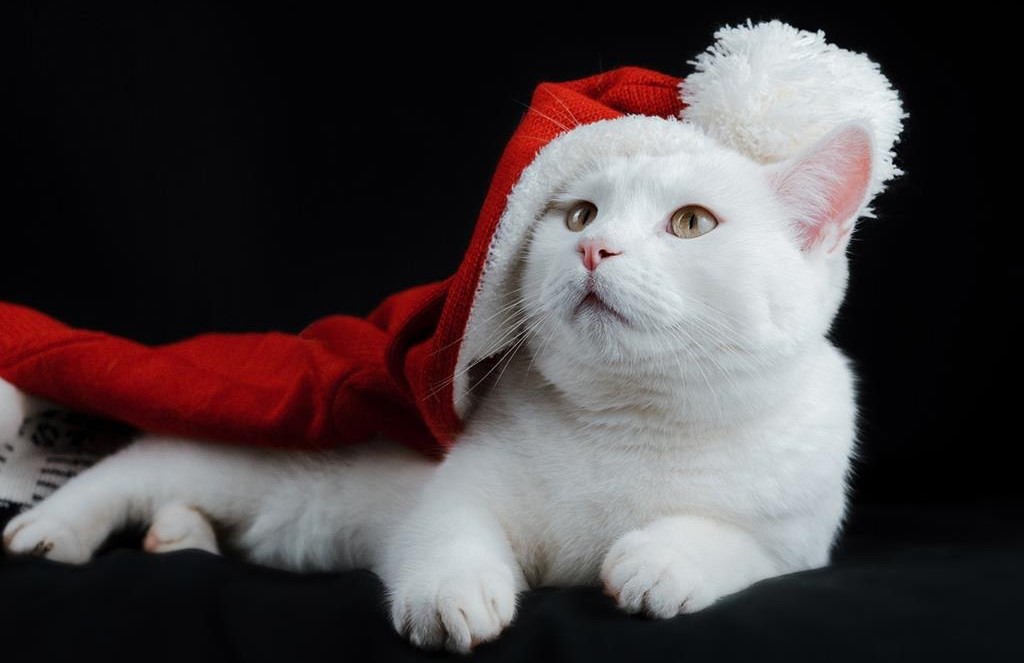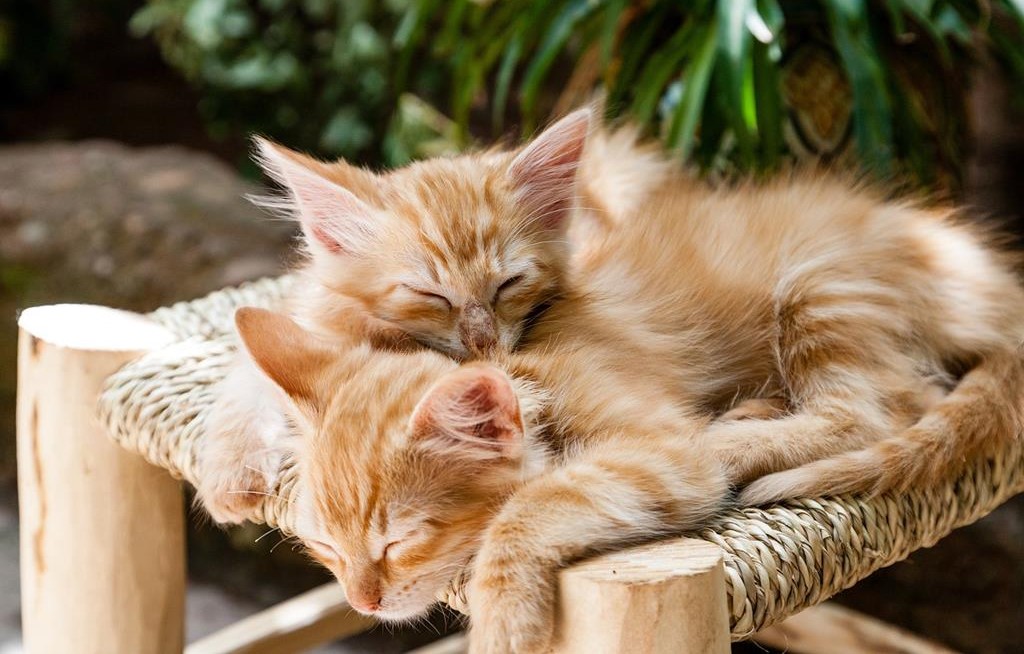Cats are known for their enigmatic and endearing behaviors, and one of the most captivating actions they engage in is kneading. This curious behavior involves cats rhythmically pressing their front paws onto surfaces, often with a look of pure contentment on their faces. While it might seem like a simple action, kneading holds a complex blend of instinct, history, and emotion that adds to the mystery of our feline companions.
The Origins of Kneading
The origins of kneading can be traced back to a cat’s earliest days of life. As kittens, they knead their mother’s belly while nursing. This action stimulates milk flow and ensures they receive the nourishment they need. The memory of this nurturing behavior can persist into adulthood, where cats continue to knead even when they’re no longer nursing.
5 Reasons Cats Knead
1. Nostalgia and Comfort:
Kneading is often associated with feelings of comfort and security. Cats may knead when they’re settling down for a nap or enjoying a cozy moment. The rhythmic motion seems to transport them back to the days of kittenhood and their mother’s warmth.
2. Scent Marking:
Cats have scent glands located on the soft pads of their paws. When they knead a surface, they release pheromones from these glands. This action is believed to be a way for cats to mark their territory, leaving behind their unique scent. It’s like a subtle “I was here” sign for other cats and animals.
3. Stress Relief:
Just like humans engage in repetitive behaviors to soothe themselves, cats may knead to relieve stress or anxiety. The gentle pressure and familiar motion can have a calming effect, helping cats cope with changes in their environment or routine.
4. Stretching and Exercise:
Kneading can also serve as a form of stretching and exercise for cats. The action involves the muscles in their paws, shoulders, and back, promoting flexibility and circulation. Cats often incorporate kneading into their grooming rituals.
5. Bonding and Affection:
When a cat kneads you – whether it’s your lap, your blanket, or even your body – it’s a sign of trust and affection. The behavior is often accompanied by purring, creating a heartwarming connection between cat and owner. Cats may knead to show their appreciation for your presence and care.
Observing Your Cat’s Kneading
While the reasons behind kneading are multifaceted, it’s crucial to remember that not all cats knead, and those that do might have their unique style and frequency. Observing your cat’s kneading behavior can provide insights into their mood and emotions. If your cat is kneading contentedly, it’s a good indicator that they’re feeling secure and happy.
Embracing the Quirkiness
As cat owners, witnessing the adorable and puzzling behaviors of our feline friends is part of the joy they bring into our lives. Kneading is a prime example of this quirky charm, as cats seamlessly blend their ancestral instincts with their modern companionship. Whether it’s a display of comfort, a mark of territory, or a symbol of affection, kneading showcases the complexity and depth of the feline world, inviting us to appreciate and understand our cats on a deeper level.
Should You Let Your Cat Knead You?
If you’ve ever experienced the sensation of your cat kneading your lap or any part of your body, you might wonder whether you should encourage or discourage this behavior. The answer largely depends on your cat’s comfort and your own tolerance.
Kneading is a natural and instinctive behavior for cats. It’s often associated with feelings of contentment, trust, and nostalgia from kittenhood. Allowing your cat to knead you can strengthen your bond and provide a sense of security. The rhythmic motion accompanied by purring can be incredibly soothing for both you and your feline companion.
However, it’s important to note that kneading can sometimes involve the use of claws, which might cause discomfort or even mild scratching. If your cat’s kneading becomes uncomfortable, you can place a soft barrier like a blanket or a pillow between their paws and your skin.
In the end, whether or not you let your cat knead you is a personal choice. If you enjoy the affectionate display and your cat seems content, allowing them to knead can be a delightful way to strengthen your special bond.
Why Do Cats Knead on Blankets?

Cats knead on blankets and soft surfaces for various reasons, each tied to their natural instincts and behaviors. Kneading is a throwback to kittenhood when they kneaded their mother’s belly to stimulate milk flow. This comforting action often continues into adulthood.
Blankets offer a cozy texture that mimics the feeling of their mother’s fur and provides a sense of security and comfort. Kneading on blankets might also be a way for cats to mark their territory by releasing scent from the glands in their paws. It’s a form of communication, telling other cats that this particular spot is claimed.
Moreover, the act of kneading can be soothing and stress-relieving for cats. The repetitive motion helps them relax and could be a self-soothing behavior, particularly during moments of anxiety or transition. So, when your feline friend kneads on blankets, it’s a blend of instinct, nostalgia, and comfort, creating a heartwarming display of their complex nature.
What Do Cats Want When They Knead?
When cats knead, they communicate a mix of emotions and instincts. This rhythmic paw pressing, often accompanied by purring, typically indicates a state of contentment, comfort, and happiness. The behavior harks back to kittenhood, when they kneaded their mother’s belly to stimulate milk flow.
Cats knead when they feel safe and relaxed, seeking the soothing comfort reminiscent of their early bonding experiences. Additionally, the action is linked to territorial marking. Scent glands in their paws release pheromones onto surfaces, subtly marking them as their own.
While kneading serves as a sign of trust and affection, it’s also a stress-relieving mechanism. During times of anxiety, cats may knead to self-soothe, finding solace in the repetitive motion.
Ultimately, when your feline companion kneads, they’re sharing a special blend of memories, emotions, and instinctual behaviors, creating a heartwarming connection between you and them.
FAQ:
1. What is cat kneading?
Cat kneading is the behavior where a cat rhythmically presses and alternates their front paws against a surface, often soft and comfortable. It’s sometimes called “making biscuits” due to the motion’s resemblance to kneading dough.
2. Why do cats kneed?

Cats kneed for various reasons, including nostalgia from kittenhood, scent marking, stress relief, stretching, exercise, and as a way to bond and show affection.
3. Do all cats knead?
Not all cats knead, but it’s a common behavior among many feline companions. The inclination to knead can vary among individual cats.
4. What does it mean when a cat kneads you?
When a cat kneads you, it’s often a sign of trust, comfort, and affection. Cats may knead their owners as a way to bond and show that they feel safe and content in their presence.
5. Why do cats purr when they knead?
Cats often purr when they knead, which adds to the cozy atmosphere of the behavior. The combination of kneading and purring suggests a heightened state of relaxation and contentment.
6. Is kneading related to nursing behavior?
Yes, kneading behavior has its roots in kittenhood. Kittens knead their mother’s belly to stimulate milk flow while nursing. This instinctual behavior can continue into adulthood as a soothing action.



